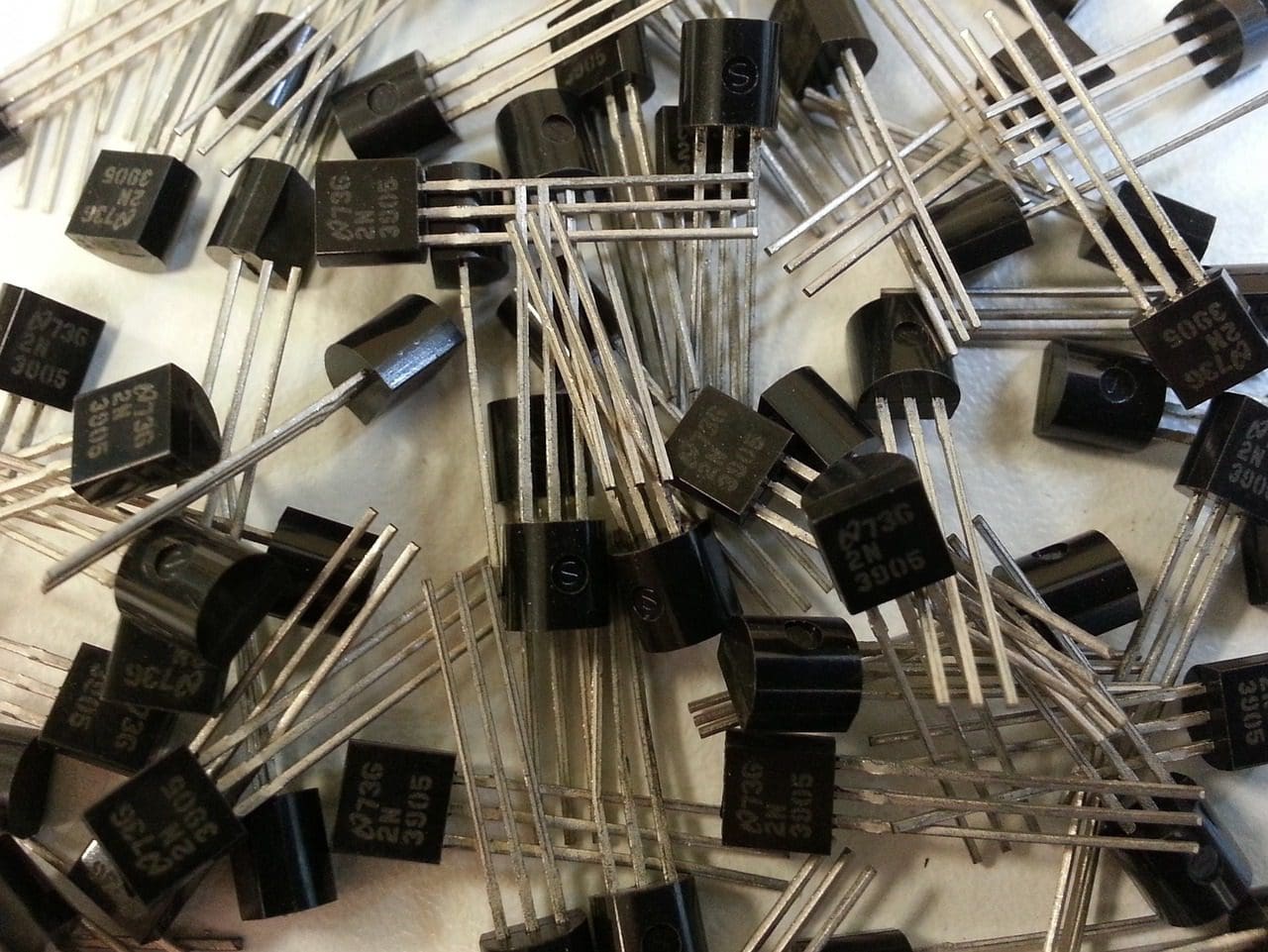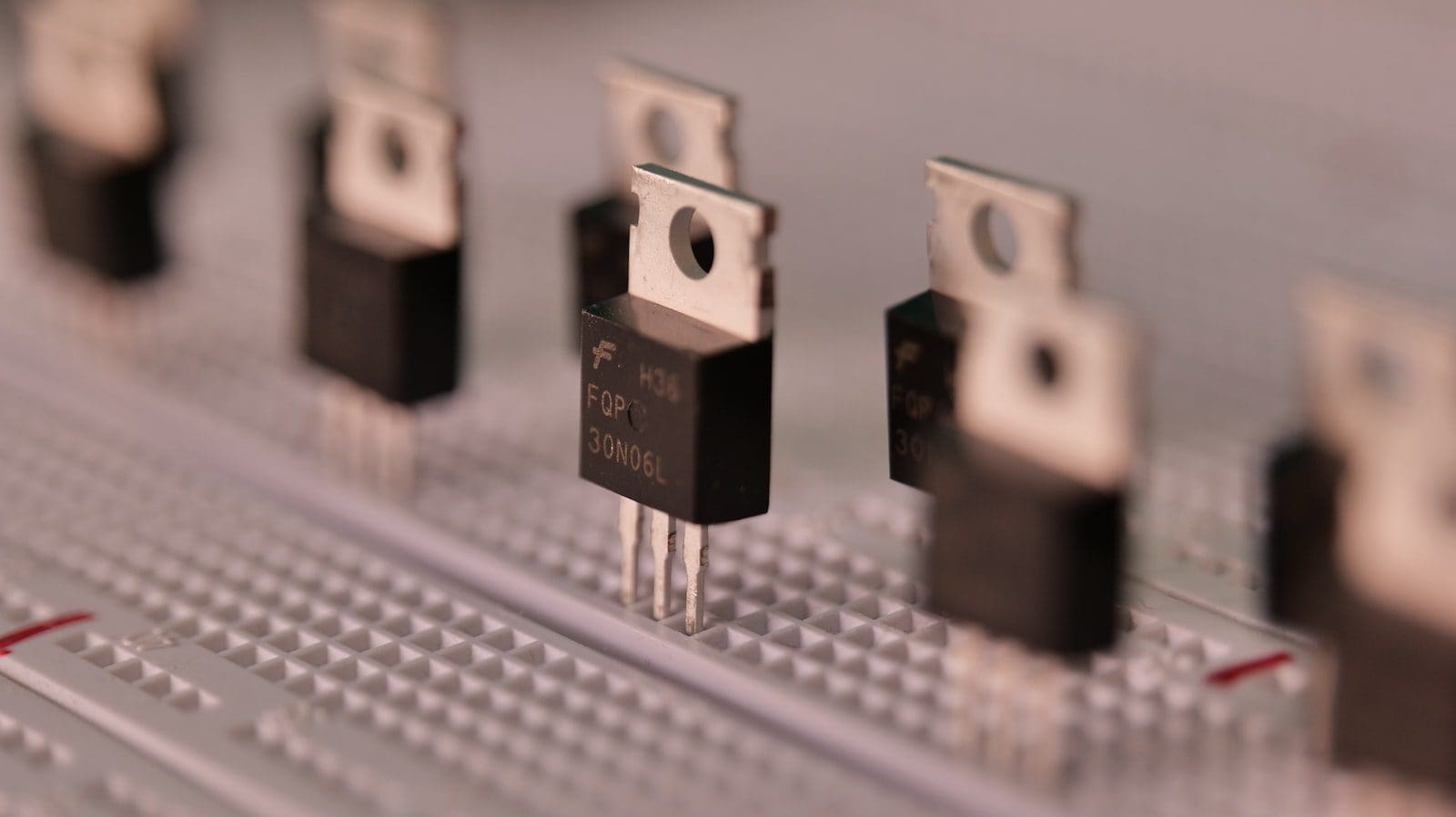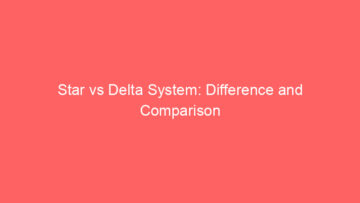Electricity plays an important role in day-to-day life, and so does the current. Current is the flow of charged particles, like electrons or ions, through conductive materials like metal wires.
The current flow is determined in the circuit, which includes a wire, switch, battery, and an electronic gadget (mostly a bulb); this is the most basic circuit one can show for a basic explanation.
Transistors have three terminals (emitter, base, and collector), enabling them to connect to an external circuit. They are active components of integrated circuits.
There are two types of transistors mainly; BJT, abbreviated for Bipolar junction transistor, and FET, abbreviated for Field-effect transistor.
Key Takeaways
- BJT (Bipolar Junction Transistor) is a type of transistor that relies on electrons and holes as charge carriers and operates through the control of the base current.
- MOSFET (Metal-Oxide-Semiconductor Field-Effect Transistor) is another type of transistor that controls current flow through a semiconductor channel by applying a voltage to the gate terminal.
- Key differences between BJT and MOSFET include their charge carriers, operating principles, voltage requirements, and switching speeds, with MOSFETs offering higher input impedance and faster switching times.
BJT vs. MOSFET
BJTs are current-controlled with high power handling and linear amplification, while MOSFETs are voltage-controlled with high speed and low power consumption, suited for digital applications.

Comparison Table
| Parameters of Comparison | BJT | MOSFET |
|---|---|---|
| Hardware construction | Emitter, base, and collector | Source, gain, and drain |
| Preferred for applicants | Low current applications | High power, current control applications |
| Input impedance | Low | High |
| Temperature coefficient | Negative temperature coefficient | Positive temperature coefficient |
| Device | Current controlling devices | Voltage controlling devices |
What is BJT?
BJT is an abbreviation of Bipolar junction transistors; it is a type of transistor that uses charged electrons and electron holes. It is a current-driven device.
BJT is used as an amplifier, oscillator, or switch in several ways. It has three terminals or pins mainly; base, collector, and emitter. The collector or emitter output is the function of the current in the base.
The operation of the BJT transistor is driven by the current in the base. BJT is bipolar; hence there are two junctions named ‘P’ and ‘ N.’ There are two types of BJT; PNP transistors and NPN transistors.
Some of these applications of BJT are; audio amplifiers in stereo systems, power control circuits, AC inverters, power amplifiers, switch-mode power supplies, AC motor speed controllers, relay and drivers, etc.
BJT transistor consists of mainly four layers; the first layer is the emitter layer (n+) which is heavily doped; the second layer is the base layer (p) which is moderately doped; the third layer is the collector drift region (n-) which is lightly doped, and the fourth layer collector region (n+) which is highly doped.
BJT is preferred for low current applications, as it has a low switching frequency and a negative temperature coefficient.

What is MOSFET?
It is also known as metal oxide-silicon-transistors, it can be classified as a type of transistor with insulated-gate field-effect transistors, which are further fabricated by the controlled oxidation of semiconductors mostly with silicon, and it is unipolar.
MOSFET is used for amplifying or switching the voltage within the circuit. The field produced by the voltage at the gate allows the current to flow between the source and the drain.
MOSFET working depends upon the MOS capacitor, the semiconductor surface between the source and the drain. Their infinite input impedance allows the amplifier to catch almost all signals.
MOSFETs are available in two basic forms; depletion type, in which the transistor requires the gate-source voltage to switch the device off.
Applications of MOSFET include; radio-controlled applications (such as boats, drones, or helicopters), controlling the auto intensity of street lights, motor torque-speed control, industrial control environment, robotics, pairing with microcontrollers to establish systems that control lights, etc.
MOSFET suits high power, current control applications, and analog and digital circuits. Its output is controlled by controlling the gate voltage. It has a positive temperature coefficient.

Main Differences Between BJT and MOSFET
- BJT is used for current control devices, whereas MOSFET is used for voltage control devices.
- The input impedance of BJT is low. On the other hand input impedance of MOSFET is high.




